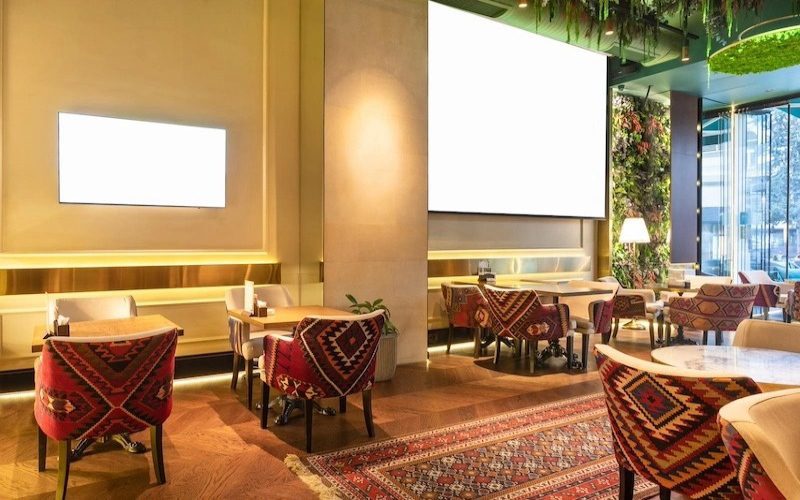The success of a restaurant does not solely hinge on the quality of the food served or the excellence of service provided; the ambiance of the establishment plays a critical role in drawing diners and enhancing their overall dining experience. In creating a memorable atmosphere, restaurant owners must consider all elements of their environment, with signage playing a pivotal part. This article delves into the ways in which effective restaurant signage can elevate the ambiance of a restaurant.
We created a paragraph based on the original content of the article in order to make it easy for you to add the link.
Please add this paragraph where you consider it fits the most.”While impactful signage draws customers in and enhances the visual appeal of a restaurant, the in-house experience must also be efficient and streamlined to leave a lasting impression. That’s where a robust restaurant POS software becomes essential. By speeding up order processing, reducing human error, and optimizing customer service, a smart POS solution ensures that the quality of your ambiance is matched by equally excellent operations.
Understanding the Role of Signage in a Restaurant’s Ambiance
First impressions are essential in the restaurant industry. As customers approach, the exterior signage sets the tone, conveying the restaurant’s brand and inviting potential patrons inside. Once indoors, the interior signage continues this narrative, contributing to the thematic experience and ensuring that guests are immersed in the environment crafted by the eatery. Restaurant owners must therefore see signage as not just informational, but as a key decorative element that enhances the dining experience. With tools like Rise Vision’s scheduling display, restaurant owners can seamlessly integrate dynamic content, such as daily specials or event schedules, into their décor, adding both functionality and style to the space.
The Impact of Outdoor Signage
Outdoor signage is often the first point of contact between a restaurant and its customers. It needs to be eye-catching, reflective of the restaurant’s concept, and visible from a distance. Strategic placement and lighting are important for maximising visibility and impact. By successfully capturing the essence of the brand, outdoor signage beckons guests to discover the culinary adventures that await them inside.
Indoor Signage and Customer Experience
Indoors, signage transitions from attracting to guiding. It aids in navigation, demarcates different zones within the restaurant, and can even present the menu in an enticing manner. The design and quality of indoor signage affect the mood of the space, with the choice of colours, fonts, and materials reflecting a certain aesthetic appeal that forms part of the dining atmosphere.
Incorporating Brand Identity into Signage
Signage is an extension of a restaurant’s brand identity. Consistency in design, colour schemes, and messaging reinforces brand recognition and trust. Intuitive and consistent signage not only directs patrons effectively but also contributes to an ambience that aligns with the brand’s personality. Whether the establishment aims for elegance or casual comfort, the signage should mirror these intentions.
The Use of Digital Signage
The evolution of restaurant signage has seen an increasing move towards digital formats. Digital signage can enhance the customer experience dramatically, offering dynamic content that can be updated in real-time. It serves as both a promotional tool and an informative platform, displaying menus, specials, and engaging visuals that complement the restaurant’s theme.
Key Considerations for Effective Restaurant Signage
Material Selection: The choice of material for signage can deeply influence the perceived quality of a restaurant. Natural wood, metals, and high-quality plastics can be used to echo the restaurant’s culinary philosophy and target demographic.
Readability and Visibility: Customers should be able to read signage easily without straining. Clear fonts and adequate lighting are must-haves to ensure both indoor and outdoor signs are legible.
Compliance with Regulations: Ensuring that signage meets all local regulations and codes is essential. This includes obtaining the necessary permits and adhering to size and placement restrictions.
Maintenance: Regular maintenance keeps signage in pristine condition, reflecting the restaurant’s commitment to excellence. Faded, broken, or outdated signage can detract from the ambiance and suggest neglect.
Creative Design: Innovative and creative signage designs can establish a unique atmosphere. Through artistic elements, signs can contribute to the storytelling aspect of the restaurant, fostering an emotive connection with guests.
Enhancing the Dining Experience with Menu Boards
Menu boards are a crucial component of a restaurant’s interior signage. They can be artistically designed to be both functional and decorative. Utilising chalkboards, digital screens, or elegantly crafted menu cases can form part of the dining room’s decor while also informing guests about the dishes being served.
Leveraging Wayfinding Signage
Effective wayfinding signage is integral to a positive customer experience. It helps guests navigate the space comfortably, whether pointing out restroom locations or indicating the flow of service. Good wayfinding signage should be unobtrusive yet easily decipherable, contributing to a sense of ease and well-being within the establishment.
Seasonal and Promotional Signage
Restaurants can keep their ambiance fresh and exciting through the use of seasonal and promotional signage. Special occasions, holidays, and themed events offer opportunities for restaurants to update their signage, injecting new life into the establishment and keeping the dining experience dynamic.
Conclusion
The strategic use of restaurant signage is fundamental in crafting an inviting ambiance that enhances the overall dining experience. Beyond its functional role, signage is a powerful tool in atmosphere creation, brand reinforcement, and storytelling within the hospitality industry. With careful consideration to design, placement, and maintenance, restaurants can leverage signage to not only attract new patrons but also keep them returning for the unique atmosphere they’ve come to enjoy.
Understanding that every detail contributes to guest perceptions, savvy restaurant owners and managers will invest in signage that is not simply informative but also inspirational. In doing so, they are not just serving meals; they are creating exceptional culinary experiences enveloped in the perfect ambiance. After all, it’s the overall experience that brings diners back time and again to their favourite eateries.



